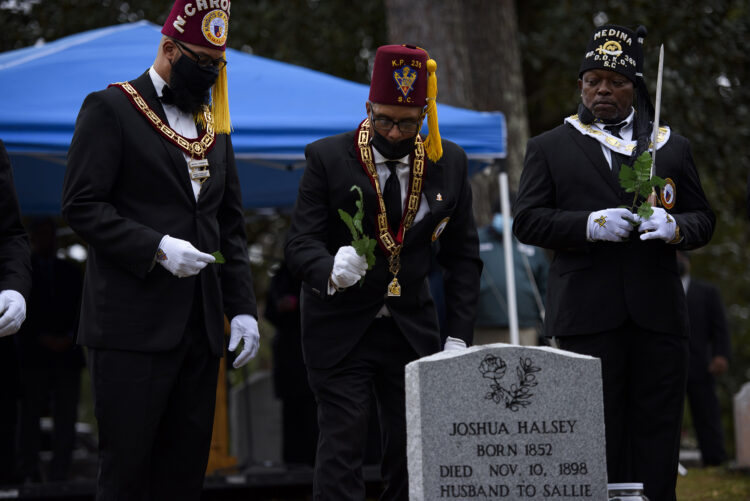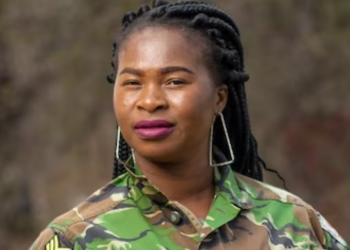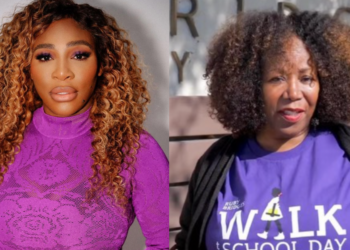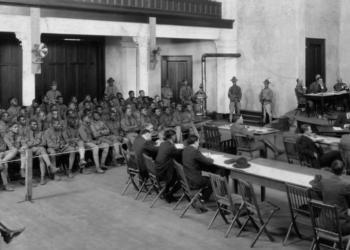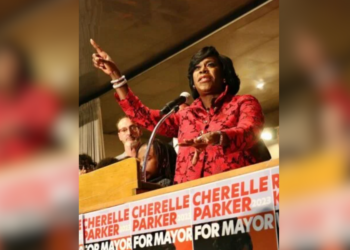A black man killed during the Wilmington massacre over 120 years ago was finally honored with a funeral service last week (Nov.6).
Joshua Halsey was one of possibly 100 victims killed in the massacre by white supremacists, according to the research from the Third Person Project. In a report obtained from CNN, John Jeremiah Sullivan reported the victim count of the victims reached 250. He worked on the project after years of historical research and scouring through black cemetery records. Project members discovered Halsey’s remains in an unmarked graveyard. On the 100th anniversary of the massacre, the state released a report in 1998 with two identified victims of the killings – Halsey and Samuel McFarland.
Elaine Cynthia Brown, a descendant of Halsey’s, said, “the discovery of her ancestors remains was “surreal” for her family.”
“We were in shock because this is so unprecedented,” Brown told CNN. “But then we said, ‘You know what? Why not Joshua?'”
The Charles Waddell Chesnutt Archive is here to honor the descendants of the 1898 Wilmington Race Massacre. pic.twitter.com/KeGiTtX1rI
— Charles Chesnutt Archive (@ChesnuttArchive) November 6, 2021
January 6ths and November 10ths don’t just happen. They are planned. And we need to call it out when we see it on the city council, when we see it on the county commission, when we see it in the state legislature, when we see it in the Congress.
— Rev. Dr. William J. Barber II (@RevDrBarber) November 6, 2021
“Why not be the beacon of what can happen when we sort of unearth the truth, uncover the truth and unpack it?” Brown said. “You know, this is where it’s going to start, and the stories are going to come out as more victims are found, and we hear their stories. But we now know that it exists. We now know that we can change it. We now are getting the true history of what happened here.”
The Wilmington Massacre occurred in Wilmington, North Carolina. Like the Tulsa Massacre, another deadly massacre that happened 20 years later, Wilmington had a thriving black community with a building and loan association and libraries, banks, and schools. The district also formed its own newspaper, The Daily Record.
According to an excerpt from the 1898 Wilmington Race Riot Commission, black community members were employed in all segments of the workforce. Black men and women “were skilled artisans, government employees, maritime crew members, industrial workers, laborers, and domestics.”
The commission stated that the White supremacists, who were members of the Democratic Party, overturned the election by intimidating black voters and tampering with returns. A mob of more than 2,000 white men set The Daily Recordablaze and started attacking and killing Black people.
Black local officials were forced to resign and replaced by White supremacists who installed themselves into community roles.
According to historians, The Wilmington Massacre was the only violent coup d’etat on U.S. soil. The massacre forever changed the black culture that was deeply rooted in Wilmington.
To honor those who lost their lives during the massacre, The City of Wilmington planned a series of events from November 1 to 10 to memorialize the victims. Rev. William Barber II of the Poor People’s Campaign gave the eulogy at last weeks ceremony with several of Halsey’s descendants in attendance.
“We must find the vestiges of systemic racism that are still happening today, and that is still going on today,” Barber said. “And we must call them out in Joshua’s name. I’m here to tell you that what killed Joshua is still alive today.”


